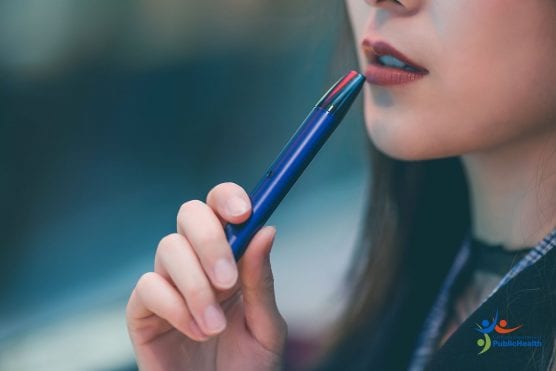SACRAMENTO – The California Department of Public Health launched a new advertising campaign Monday called, “Tell Your Story,” in response to the latest high school vaping data from its 2019-20 California Student Tobacco Survey. California has made progress in combating the youth vaping epidemic, but with kids going back to in-person learning, it is crucial we continue making progress.
The survey, which includes data from September 2019 to March 2020, revealed that California’s high school vaping rate is at its lowest in four years (8.2%) while the number of California teens trying to quit vaping more than doubled since 2018. During the same time, numerous youth and young adults were hospitalized due to the e-cigarette, or vaping product use-associated lung injury (EVALI) outbreak, sending a warning to young people across the state. California was the first state in the nation to respond to the deadly EVALI outbreak with a large-scale public awareness advertising campaign to protect young people, launched by Gov. Gavin Newsom’s Executive Order on September 16, 2019.
As California was responding to the EVALI epidemic, the COVID-19 pandemic created another public health crisis that attacks the lungs, reinforcing lung health as a top priority. Smoking and vaping harms the lungs, putting Californians who vape at greater risk from COVID-19. Research has shown teens who have tried vaping are five times more likely to test positive for COVID-19.
“By addressing the dangers of vaping as part of our preparation for schools reopening, California is taking an even more proactive approach in protecting youth health,” said Dr. Tomás J. Aragón, CDPH Director and State Public Health Officer. “Returning to in-person learning could mean a spike in teen vaping use at exactly the wrong time. It’s critical young people know the facts about the dangers of vaping and have the support and resources they need to avoid use or quit.”
The “Tell Your Story” campaign features real stories from young people and highlights their journey to quit vaping. The campaign educates youth and young adults about the harmful health effects of vapes and connects them with evidenced-based resources to quit, especially as they’re exposed to increased social pressure in school environments.
“Seeing the impact vaping had on my health and my family, after I got out of the hospital, I knew I had to focus on living a healthier lifestyle, and that started with quitting vaping,” said Blake Grey, a 20-year-old content creator and “Tell Your Story” campaign ambassador from Los Angeles. Grey underwent emergency surgery in 2019 when he was diagnosed with pneumomediastinum, caused by a vaping injury that burned a hole in his esophagus. “I’d tried quitting before, and it was easy to fall back into old habits. But with the support of friends and family, I was able to get into the best shape of my life and found myself in a much better place mentally as well without needing to vape.”
Recognizing the negative impacts of the COVID-19 pandemic on mental health, the new campaign uses empathy and understanding for the difficult journey young people face when they quit vaping, rather than emphasizing the negative health impacts of using tobacco.
The “Tell Your Story” campaign promotes the “I Can Quit” text message program, an evidenced-based quit vaping effort that helps support the quitting process and emphasizes how to develop and successfully practice coping strategies. The program is centered on a desired quit date and then adjusts the content and timing of the texts, so they are relevant to the users’ phase of quitting. The text program covers topics including motivation, planning, goal setting, seeking support, self-talk, withdrawal management, recovering from slips and much more.
The annual student tobacco survey conducted by CDPH, in partnership with University of California, San Diego, assessed the use of and attitudes toward tobacco products among middle and high school students along with social and environmental exposure to various tobacco products and advertisements. Additional key findings from the report include:
– Overall tobacco use (9.7%) among high school students was mainly driven by the rate of vape use (8.2%). Vape products were the most used tobacco product among students across gender, race/ethnicity, and grade.
– In 2020, 11.6% of LGBTQ+ identifying high school students in California vaped, compared to the overall California high school vaping rate of 8.2%.
– High school students who rated their mental health as poor had higher current tobacco use prevalence (16.1%) compared to those who rated their mental health as good to excellent (7.9%).
– The vast majority of teens who vape use flavored vapes (96.2%).
Californians looking to quit can text “I Can Quit” to 66819 or visit NoVapes.org to join the free, confidential text message program.
Like this:
Like Loading...
Related





 Tweet This
Tweet This Facebook
Facebook Digg This
Digg This Bookmark
Bookmark Stumble
Stumble RSS
RSS

























REAL NAMES ONLY: All posters must use their real individual or business name. This applies equally to Twitter account holders who use a nickname.
0 Comments
You can be the first one to leave a comment.